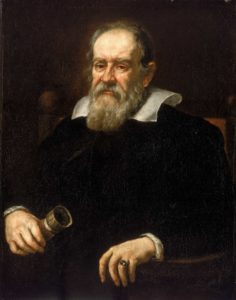Learning from the Vatican’s Reversal on Galileo
by Jeffrey W. Hamilton
 December 21, 2008, was the 400th anniversary of Galileo's use of the telescope, and the Roman Catholic church took the opportunity to announce once again that it had made a mistake in condemning Galileo. It is actually not the first time it has admitted to this mistake. Pope Benedict XIV had forgiven Galileo in 1741 by adding the Roman Catholic church's imprimatur to his Complete Works. In 1757, the church removed from its banned books list the books that supported the idea of the earth going around the sun. Pope Pius VII gave an imprimatur to books supporting Copernicus' theory in 1822. In 1979, a commission was started to reinstate Galileo, which led to Pope John Paul II's second, on November 4, 1992, to announce that the denunciation of Galileo was a tragic error.
December 21, 2008, was the 400th anniversary of Galileo's use of the telescope, and the Roman Catholic church took the opportunity to announce once again that it had made a mistake in condemning Galileo. It is actually not the first time it has admitted to this mistake. Pope Benedict XIV had forgiven Galileo in 1741 by adding the Roman Catholic church's imprimatur to his Complete Works. In 1757, the church removed from its banned books list the books that supported the idea of the earth going around the sun. Pope Pius VII gave an imprimatur to books supporting Copernicus' theory in 1822. In 1979, a commission was started to reinstate Galileo, which led to Pope John Paul II's second, on November 4, 1992, to announce that the denunciation of Galileo was a tragic error.
I find the events ironic because we have the ones who did a man wrong telling the victim (long after his death) that he is forgiven. It is supposed to be the other way around. The wrong-doer receives the forgiveness of the ones he wronged. Only the victim can release the wrong-doer from the debt created by his wrongful action. It would be Galileo who could offer the Roman Catholic church forgiveness, not the other way around.
The story again emphasizes that the Roman Catholic church has changed its position and has held contradictory ideas at different points in its history. Galileo appeared before an inquisition board twice. The first appearance led to the order: "We … in our own hand declare neither has any penance salutary or otherwise been imposed upon him … The declaration was … intimated to him … that the doctrine attributed to Copernicus … is contrary to the Holy Scriptures … and therefore cannot be defended or held." [Galileo, The Roman Inquisition and the Mass: The Historical Puzzle, European Institute of Protestant Studies]. They would accept a presentation concerning the hypothesis of Copernicus' thoughts but not as a fact. Thus, he was given a gag order: "His holiness … ordered the Most Illustrious Lord Cardinal Bellarmine … to issue an injunction … against Galileo … to abstain completely from teaching or defending this doctrine … or discussing it … he should not acquiesce he is to be imprisoned." [ibid.] At the second inquisition in 1633, Galileo was placed under house arrest for the remaining eight years of his life because he published a book supporting Copernicus' view of the solar system and, worse, used one of the Pope's own arguments as the words of a character whose name meant "simple-minded."
The problem is that Roman Catholicism was caught up in the prevailing beliefs of its day. Galileo's "problem arose when he stopped proposing it as a scientific theory and began proclaiming it as truth, though there was no conclusive proof of it at the time. Even so, Galileo would not have been in so much trouble if he had chosen to stay within the realm of science and out of the realm of theology. But, despite his friends’ warnings, he insisted on moving the debate onto theological grounds. In 1614, Galileo felt compelled to answer the charge that this "new science" was contrary to certain Scripture passages" [The Galileo Controversy, Catholic Answers]. Despite the Roman Catholic church's protest, Galileo's work did constitute proof that the old view of the earth being the center of the universe and everything else revolving around it was wrong. But because Galileo supported his teaching with Scripture, it got the Roman Catholic church up in arms. He contradicted their teaching that an earth-centric view was what the Bible taught -- and he did a fair job of proving them wrong. "Theologians were not prepared to entertain the heliocentric theory based on a layman’s interpretation. Yet Galileo insisted on moving the debate into a theological realm" [The Galileo Controversy, Catholic Answers]. Yet the point remains that the Roman Catholic church held against Copernicus' ideas on a theological basis and could not bring itself to admit that they were wrong. Thus, the story also illustrates that the Roman Catholic church takes positions based on the popular beliefs of the day.
Galileo used their own historical traditions against the Catholic church when he pointed out that Augustine pointed out that every passage is not literal, especially in poetry. As an example, the passages that speak of God's hands and feet even though God is a spiritual being. Many of the passages used by the Catholic church to defend an earth-centric view of the world can be simply explained by relativity; that is, the author is expressing how things appear to man and not how they actually are physically. To Galileo, the Scriptures could not be wrong, but man's interpretation of the Scriptures could be wrong. Interestingly, Pope John Paul II used Galileo's arguments to explain why they were mistaken centuries back.
